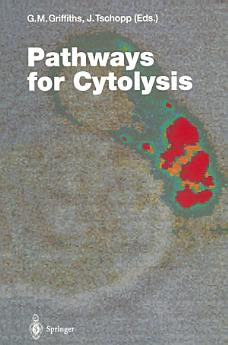Pathways for Cytolysis
Gillian M. Griffiths · Jürg Tschopp
2012年12月 · Current Topics in Microbiology and Immunology 第 198 冊 · Springer Science & Business Media
電子書
224
頁數
report評分和評論未經驗證 瞭解詳情
關於這本電子書
At first glance the destruction of a target cell by a killer cell seems to be a simple endeavor. A closer look, however, reveals the complex mechanisms underlying this task. Killer cells are able to specifically recognize altered or infected cells. A transient contract with target cells has to be established to allow the delivery of lethal molecules or signals. The killer cell then disengages from the damaged cell and moves away to kill other target cells. After the eradication of the target cells, the number or activity of activated killer cells has to be reduced to avoid nonspecific killing of innocent cells. In 1992, Herman Eisen concluded, in his introductory remarks in the most recent volume on lymphocyte cytotoxicity (EISEN 1993): "Given the immense amount of effort made in the past decade to understand these (lytic) mechanisms, it seems surprising that a consensus about the principal mechanisms has not been reached." Since that time, advances made in the field of cell-mediated cytolysis are so significant that our knowledge regarding the lytic mechanisms has been considerably augmented. Much of this is due to studies with transfectants and mutants-either naturally occurring or generated by gene targeting. It is now clear that there are two predominant pathways which act hand in hand and lead to efficienttarget cell destruction.
為這本電子書評分
請分享你的寶貴意見。
閱讀資訊
智能手機和平板電腦
手提電腦和電腦
你可以使用電腦的網絡瀏覽器聆聽在 Google Play 上購買的有聲書。
電子書閱讀器及其他裝置
如要在 Kobo 等電子墨水裝置上閱覽書籍,你需要下載檔案並傳輸到你的裝置。請按照說明中心的詳細指示,將檔案傳輸到支援的電子書閱讀器。







